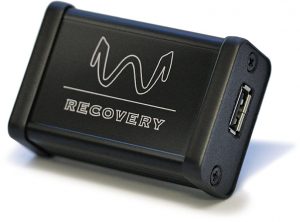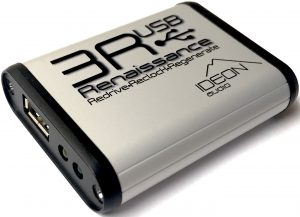Why So Jittery? Ah, so you haven’t re-clocked your USB signal … yet.
Computers are noisy in theory and in practice. Operational noise aside, the USB signal coming out of it is not only noisy, but unclean and read that to mean imprecise. This is where jitter enters the frame and as computers were never intended/designed to be audiophile level gear from the outset steps can be taken to further refine, re-clock the signal and lower the noise floor. Surprisingly this can indeed be accomplished to a notice degree rather economically.
Now, I’ve been called lots of things, and I’ll cop to most if not all of them. For purposes of this piece I agree that I am both skeptic and cynic, so when I write of system accessories and their efficacy I have and shall continue to enlist the ears of those not proclaiming themselves to be audiophiles. Rather than waste my time and yours writing about some device, I want to make sure that not only I but a preponderance of willing accomplices much like Sherlock Holmes’ Baker Street Irregulars, hear, in a blind test, a discernible difference in my systems with and without devices attached. Fortunately for you and me, and much like the vaunted groundhog they were able to make the distinction(s). More about them later.
The Ideon 3R Renaissance and Wyred 4 Sound Recovery re-clockers, this piece’s leading players, are both actual re-clockers. Inserted between one’s computer and one’s DAC, they buffer the data stream in memory and then re-clock out the other end employing a more precise, ultra-low jitter clock. No data is harmed in the process, it simply is passed through.
What is jitter? Let’s end some of the confusion with: Jitter is NOT data errors, but rather the inaccurate timing of the data being fed to the DAC. So, while I am referencing the timing of digital data, this refers only to real0time digital data from which the DAC creates a real-time analog signal each time new digital data – a new data word – is fed. Inaccuracies in timing leads to modulation distortion. It would be naïve to think that any device added by the enthusiast would have any effect on the actual recording, however, affecting change at playback by minimizing jitter raises the ante on to be or not to be a re-clocker?
Back to my Irregulars, and there were 10 of them in all. They could indeed hear a difference between my systems with and without the re-clockers. All of them noticed a distinct improvement in soundstage, clarity and musicality. I proceeded to start swapping out DACs (Mytek Brooklyn +, exaSound e22, Fostex HP-A4) and the most noticeable improvement was noticed in the addition of a re-clocker to the sub $500 HP-A4. I was asked by more than a few as to why anyone would spend so much money upgrading to a new DAC or a newer version of an existing DAC when one could purchase a re-clocker? I was quick to answer that the re-clocker indirectly improved what came out of the DAC by feeding it cleaner data, much like feeding a car gasoline with less impurities, but that it was in fact physically upgrading the USB connection from the computer. A find point and one that had to be made.
As stated earlier I am looking at Ideon’s 3R Renaissance and Wyred 4 Sound’s Recovery units in this analysis. I was in contact with Ideon directly and read through online materials to determine what 3R stands for so here we go: it re-drives signal transmission from the USB cable and data stream, re-generates employing a low noise power supply and re-clocks the signal as explained earlier. In deference to Wyred 4 Sound, I spoke to them directly as well as research online and the Recovery, paraphrasing their words: ‘isolates while simultaneously proving cleaner power and supplied more precise digital data with less inaccuracies, resulting in augmented levels of fidelity as the data/signal being recovered is arguably cleaner than the original.
I had to re-read my notes several times, and resort to more research, only to learn that no matter how it is written, quoted, paraphrased and diagrammed, what’s being relayed by both companies is pretty much the same descriptive process and explanation. Once products are acquired and installed the proof is in what is heard and now how it is accomplished. All the white papers are not going to amount to anything unless the device does what it is claimed.
So, all else being equal it on to audio fidelity and the world of subjectivity.
For the purposes of all listening I connected both devices using my own cables and supplied cables to connect them to my computer (Late 2011 Mac Mini running Audirvana Plus and Roon for playback) and the aforementioned DACs. Both companies suggested that the cables attached from their devices to the DAC be as short as possible so as not to degrade any signal. No limit was placed on the length of the USB cable coming out of my Mac Mini, but I can assure that no USB cable used were greater than 2m in length.
Once more we return to my irregulars who were instrumental in proving one thing with regard to USB cables: their length and brand – to them it just doesn’t matter. None of them could discern a difference no matter which brand or length cable was entered into the equation. After they all had come and gone, I spent hours swapping out cables and came to the realization that with respect to the price of the devices being discussed some of the cable combination surpassed, wildly surpassed their cost. Heck, one cable I tried cost close to 2x the price of the more expensive Ideon 3R Renaissance unit.
Ever so briefly I had entertained swapping powers supplies Linear vs Switched into the mix, but again that could and would increase the prices of these solutions exponentially and that would detract so much from their attractiveness as a relatively affordable accessory. Let me just put it out there, if one gets to the point where so much energy gets expended on high end USB cables and power supplies to the point that it run in excess of a thousand dollars, it’s time one takes a serious look at one’s digital source and splash out on a dedicated digital media server, not just a streamer or network playback device, but a product where great care was taken inside and out, to ensure a clean, precise signal as well as full set of operational features and an intuitive and navigable user interface. One reaches a point where one is applying band-aids instead of tourniquet, and that never ends well.
In this review and interviews to follow on Dagogo I will be exploring certain psycho-acoustic issues and questions: Are we hearing what we are hearing? Are we hearing what we want to hear? Are we hearing what we think we should be hearing? Are we hearing what others think we should be hearing? All of these are very important as I review, analyze and discuss gear with industry professionals, members of Hi-Fi’s fourth estate and enthusiasts. I’m also adopting a common cents and sensibilities approach to Hi-Fi regarding not just price, but effective/relative costs of upgrades.
Now, some personal perspective. I have in my possession 12+ terabytes of digital content, mirrored locally for redundancy and backed up off site and I have listened to and analyzed my fair share of DACs over the years. I remain in the market for a true Digital Media Server which meets all my seemingly demanding needs. In the interim, my trusty Mac Mini of six years has faithfully done its job, and apart from my personal preference of employing a dedicated solution, I cannot fault it. Why am I mentioning this? Well, having tried the unit on both my Mac and a PC running Microsoft Window and another running Volumio, there was no having to re-configure software because both operate as pass-through devices.
My Irregulars were subjected to countless genres of music on playlists I developed and they were played via Audrivana Plus and Roon on my Mac Mini. The music spanned music from the middle ages to music released just this year. The formats ran the gamut from Redbook CD to DSD128 and everything. This was and remains a no-brainer. Everyone including myself could hear the difference between having and not having a re-clocker in the mix. It was absolutely no contest and at the price points relative to the cost of gear out there it should not require a second thought.
The addition of a re-clocker made me want to listen to my music all over again. It got me to wondering, much like at least one of the irregulars whether or not it made sense to forestall the upgrade and/or purchase of a new DAC and just pick up a re-clocker?
Cards on the table time: Ideon 3R Renaissance vs Wyred 4 Sound Recovery. My Irregulars pegged it a 6-4 in favor of the Ideon and it really came down to personal preferences s they could not tell me why they preferred one device over another only that they did. When I relayed the name of the unit each had respectively chosen and price for each all remarked that the respective prices were equitable with respect to the costs of my systems. I really wanted to like one categorically above the other as it would have made this piece more eventful, but failing that I can say the following:
- 1. An external re-clocker is a must have for anyone making use of a computer as their digital source.
- 2. It breathes new life into one’s digital source and just might forestall the purchase of anew digital source and/or DAC … for now.
- 3. Whichever you choose, that decision may come down to price and/or global availability. Ideon is based out Greece/EU and Wyred 4 Sound is based out of California/US.
Copy editor: Dan Rubin
- (Page 1 of 1)



Thank you very much for inquiring about the Recovery and glad you were enjoying it to be added in your system. Like many audio components, the Recovery can be added to tighten things up a bit or drastically improve the sound of your system. We have been shipping these for quite some time and have recently reduced the price of the unit to $149 before this review so now is the time to take advantage of it as well.
Looking forward to making more progress with such devices in the future as we continue to perfect doing what we love so much. Again, thank you for your time in this review!
EJ Sarmento
Wyred4Sound
Yes, upon writing the review the price of the Wyred 4 Sound Recovery was indeed $199. At the reduced price of $149, there should be no question that ANYONE using their computer as their digital source should order the Recovery and place it immediately in their system.
Can these be used between a Cd transport and DAC?
Ricardo, a few points:
While the Wyred4Sound Recovery and Ideon 3R re-clocking devices do what they do best when connected via USB between digital sources, such as computers, network players and streamer and DACs, they are not specifically designed to be used with CD transports.The issue here is how they would be connected to the CD transport, as the ones I wrote about are USB based. Also there’s the issue of just how beneficial a re-clocker would be in the case of a low-noise (jitter) versus a high-noise (jitter) transport. I reference an article online which bears reading to better understand the implications: https://www.stereophile.com/content/jitter-digital-interface-page-4
Thanks for your reply.